Abstract
We previously described a reverse transcriptase-PCR using flavivirus genus-conserved and virus species-specific amplimers (D. W. Trent and G. J. Chang, p. 355-371, in Y. Becker and C. Darai; ed., Frontiers of Virology, vol. 1, 1992). Target amplification was improved by redesigning the amplimers, and a sensitive enzyme-linked immunosorbent assay (ELISA) technique has been developed to detect amplified digoxigenin (DIG)-modified DNA. A single biotin motif and multiple DIG motifs were incorporated into each amplicon, which permitted amplicon capture by a biotin-streptavidin interaction and detection with DIG-specific antiserum in a colorimetric ELISA. We evaluated the utility of this assay for detecting St. Louis encephalitis (SLE) viral RNA in infected mosquitoes and dengue viral RNA in human serum specimens. The reverse transcriptase-PCR-ELISA was as sensitive as isolation of SLE virus by cell culture in detecting SLE viral RNA in infected mosquitoes. The test was 89% specific and 95 to 100% sensitive for identification of dengue viral RNA in serum specimens compared with isolation of virus by Aedes albopictus C6/36 cell culture and identification by the indirect immunofluorescence assay.
Full text
PDF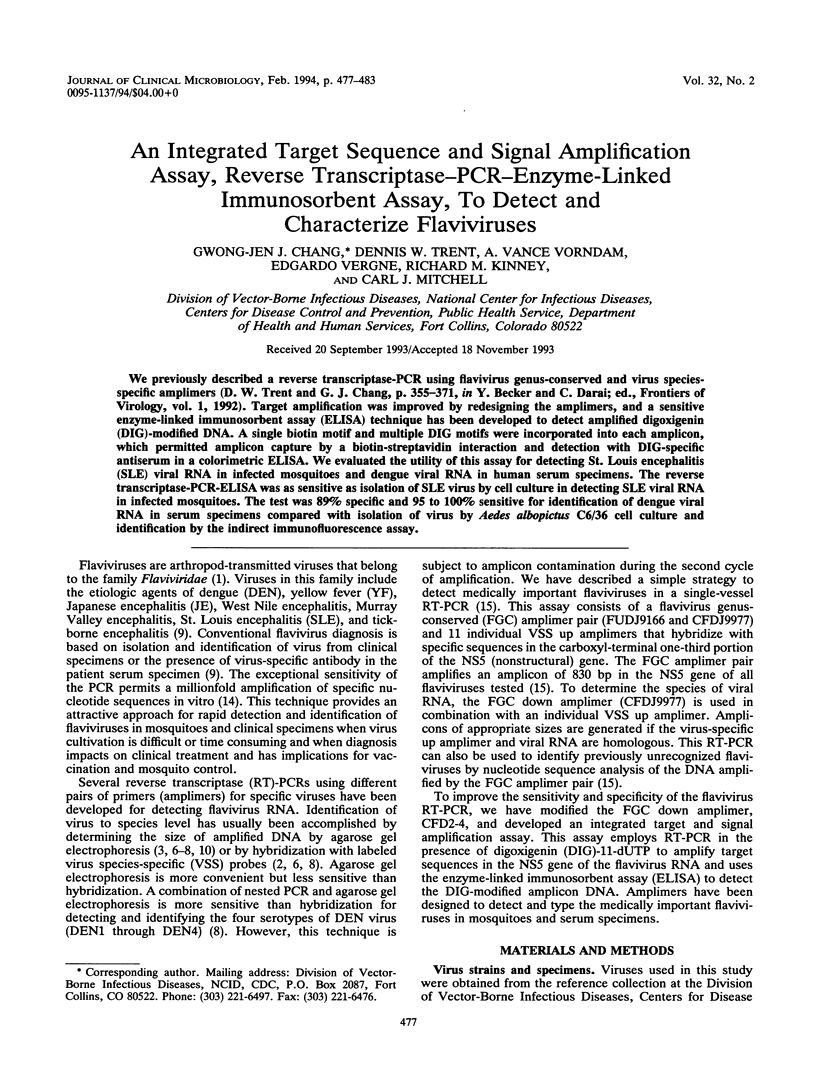
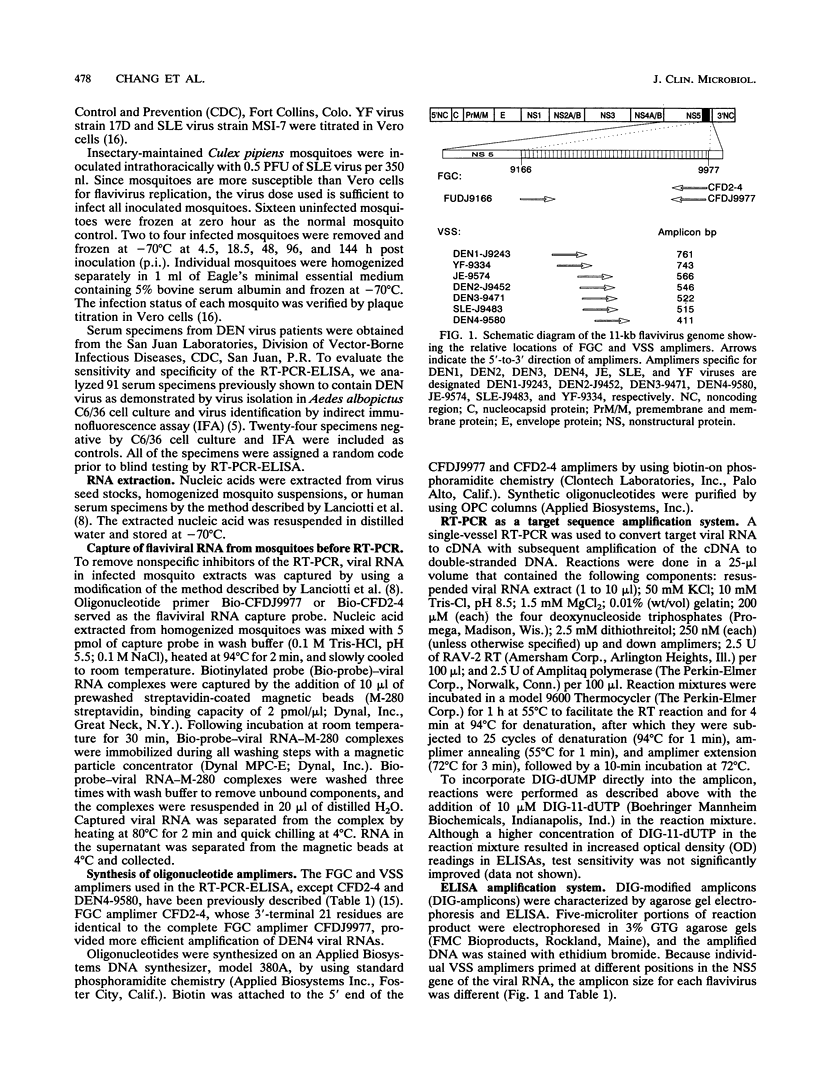
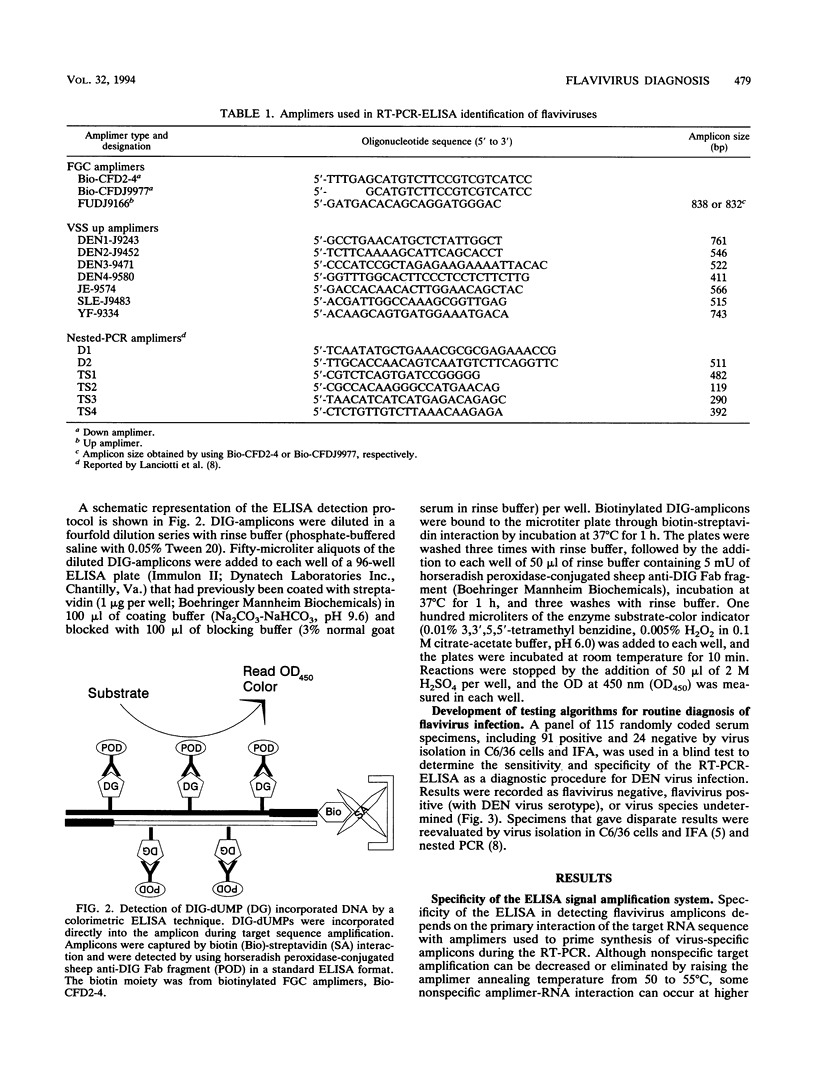
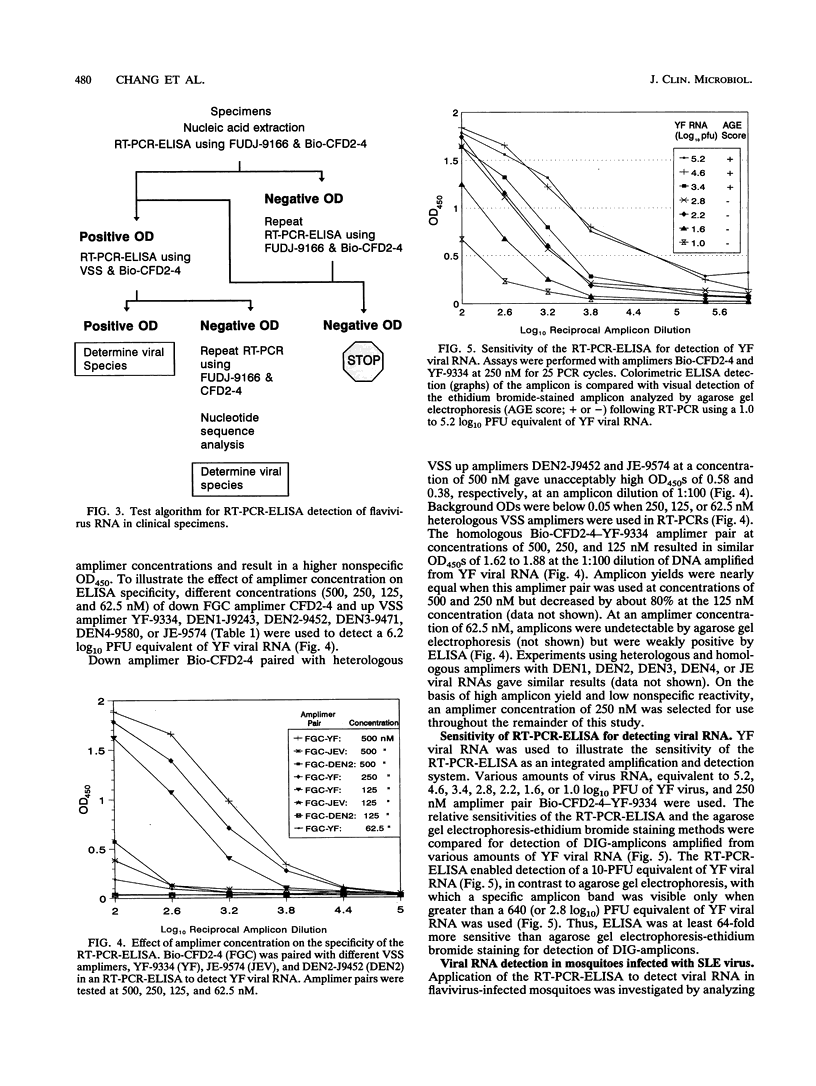
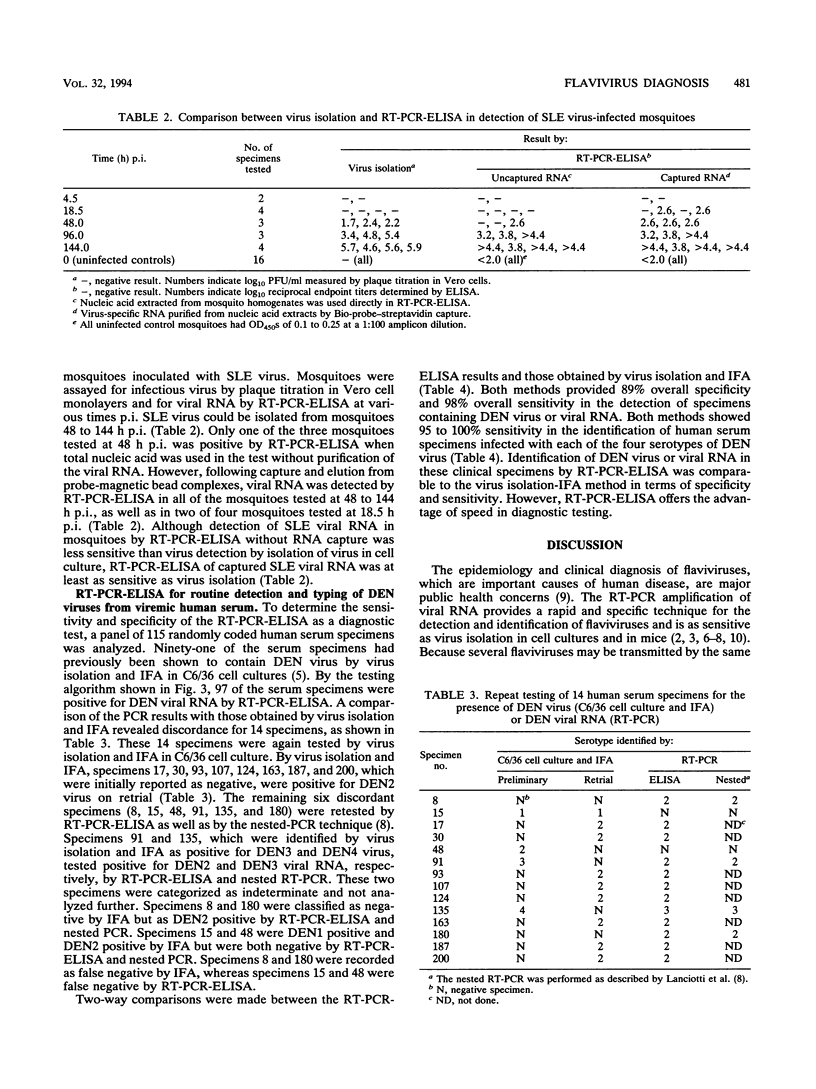
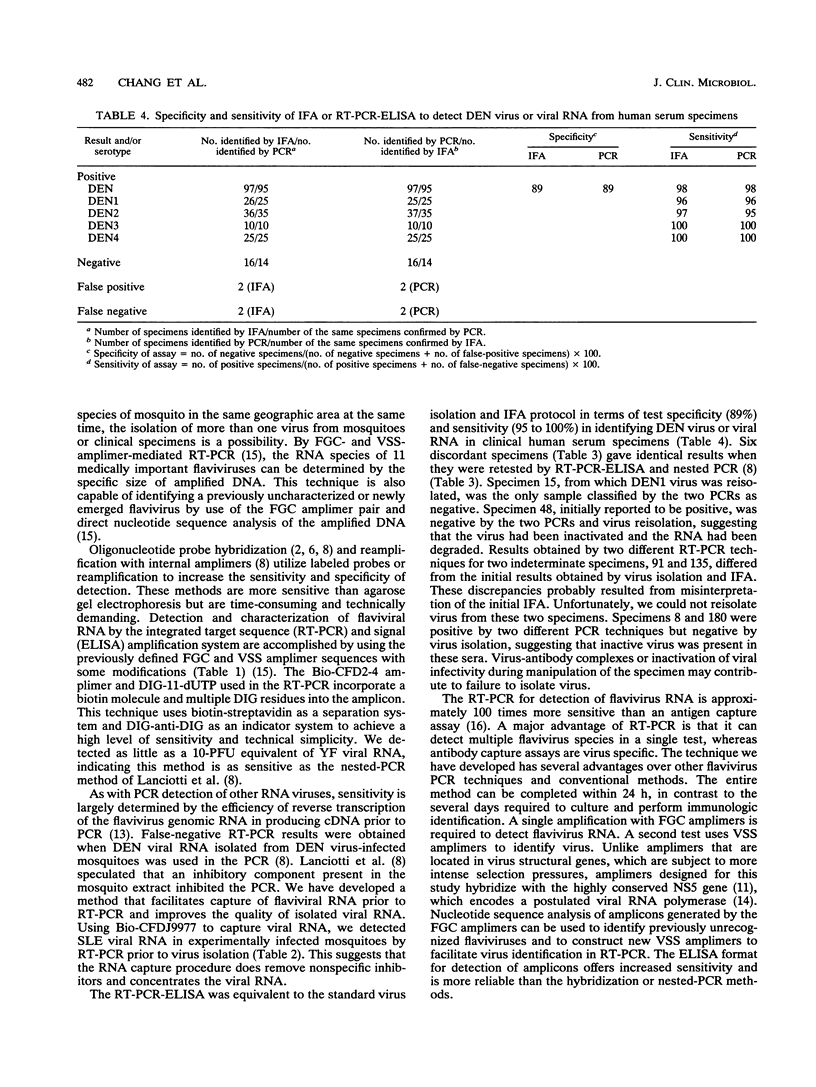
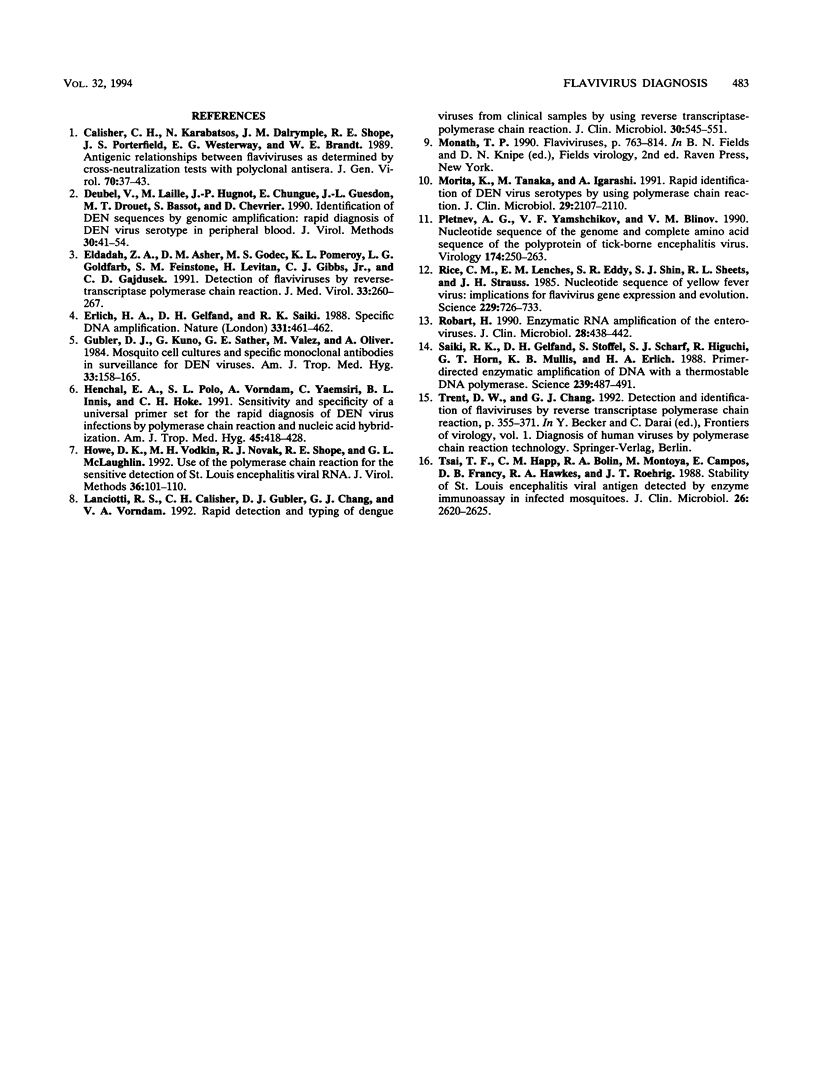
Selected References
These references are in PubMed. This may not be the complete list of references from this article.
- Calisher C. H., Karabatsos N., Dalrymple J. M., Shope R. E., Porterfield J. S., Westaway E. G., Brandt W. E. Antigenic relationships between flaviviruses as determined by cross-neutralization tests with polyclonal antisera. J Gen Virol. 1989 Jan;70(Pt 1):37–43. doi: 10.1099/0022-1317-70-1-37. [DOI] [PubMed] [Google Scholar]
- Deubel V., Laille M., Hugnot J. P., Chungue E., Guesdon J. L., Drouet M. T., Bassot S., Chevrier D. Identification of dengue sequences by genomic amplification: rapid diagnosis of dengue virus serotypes in peripheral blood. J Virol Methods. 1990 Oct;30(1):41–54. doi: 10.1016/0166-0934(90)90042-e. [DOI] [PubMed] [Google Scholar]
- Eldadah Z. A., Asher D. M., Godec M. S., Pomeroy K. L., Goldfarb L. G., Feinstone S. M., Levitan H., Gibbs C. J., Jr, Gajdusek D. C. Detection of flaviviruses by reverse-transcriptase polymerase chain reaction. J Med Virol. 1991 Apr;33(4):260–267. doi: 10.1002/jmv.1890330410. [DOI] [PubMed] [Google Scholar]
- Gubler D. J., Kuno G., Sather G. E., Velez M., Oliver A. Mosquito cell cultures and specific monoclonal antibodies in surveillance for dengue viruses. Am J Trop Med Hyg. 1984 Jan;33(1):158–165. doi: 10.4269/ajtmh.1984.33.158. [DOI] [PubMed] [Google Scholar]
- Henchal E. A., Polo S. L., Vorndam V., Yaemsiri C., Innis B. L., Hoke C. H. Sensitivity and specificity of a universal primer set for the rapid diagnosis of dengue virus infections by polymerase chain reaction and nucleic acid hybridization. Am J Trop Med Hyg. 1991 Oct;45(4):418–428. doi: 10.4269/ajtmh.1991.45.418. [DOI] [PubMed] [Google Scholar]
- Howe D. K., Vodkin M. H., Novak R. J., Shope R. E., McLaughlin G. L. Use of the polymerase chain reaction for the sensitive detection of St. Louis encephalitis viral RNA. J Virol Methods. 1992 Jan;36(1):101–110. doi: 10.1016/0166-0934(92)90161-6. [DOI] [PubMed] [Google Scholar]
- Lanciotti R. S., Calisher C. H., Gubler D. J., Chang G. J., Vorndam A. V. Rapid detection and typing of dengue viruses from clinical samples by using reverse transcriptase-polymerase chain reaction. J Clin Microbiol. 1992 Mar;30(3):545–551. doi: 10.1128/jcm.30.3.545-551.1992. [DOI] [PMC free article] [PubMed] [Google Scholar]
- Morita K., Tanaka M., Igarashi A. Rapid identification of dengue virus serotypes by using polymerase chain reaction. J Clin Microbiol. 1991 Oct;29(10):2107–2110. doi: 10.1128/jcm.29.10.2107-2110.1991. [DOI] [PMC free article] [PubMed] [Google Scholar]
- Pletnev A. G., Yamshchikov V. F., Blinov V. M. Nucleotide sequence of the genome and complete amino acid sequence of the polyprotein of tick-borne encephalitis virus. Virology. 1990 Jan;174(1):250–263. doi: 10.1016/0042-6822(90)90073-z. [DOI] [PubMed] [Google Scholar]
- Rice C. M., Lenches E. M., Eddy S. R., Shin S. J., Sheets R. L., Strauss J. H. Nucleotide sequence of yellow fever virus: implications for flavivirus gene expression and evolution. Science. 1985 Aug 23;229(4715):726–733. doi: 10.1126/science.4023707. [DOI] [PubMed] [Google Scholar]
- Rotbart H. A. Enzymatic RNA amplification of the enteroviruses. J Clin Microbiol. 1990 Mar;28(3):438–442. doi: 10.1128/jcm.28.3.438-442.1990. [DOI] [PMC free article] [PubMed] [Google Scholar]
- Saiki R. K., Gelfand D. H., Stoffel S., Scharf S. J., Higuchi R., Horn G. T., Mullis K. B., Erlich H. A. Primer-directed enzymatic amplification of DNA with a thermostable DNA polymerase. Science. 1988 Jan 29;239(4839):487–491. doi: 10.1126/science.2448875. [DOI] [PubMed] [Google Scholar]
- Tsai T. F., Happ C. M., Bolin R. A., Montoya M., Campos E., Francy D. B., Hawkes R. A., Roehrig J. T. Stability of St. Louis encephalitis viral antigen detected by enzyme immunoassay in infected mosquitoes. J Clin Microbiol. 1988 Dec;26(12):2620–2625. doi: 10.1128/jcm.26.12.2620-2625.1988. [DOI] [PMC free article] [PubMed] [Google Scholar]


